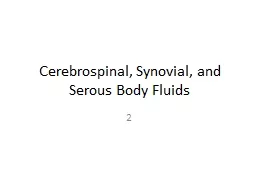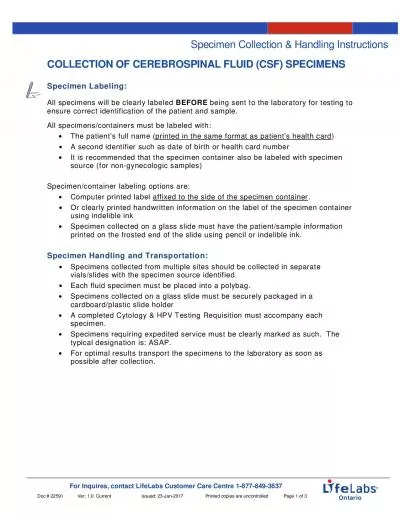PPT-Cerebrospinal, Synovial, and Serous Body Fluids
Author : phoebe-click | Published Date : 2016-10-15
2 Gram stain and culture Antigen tests Urine reagent strips Large volumes of CSF often from multiple lumbar punctures are recommended to improve the sensitivity
Presentation Embed Code
Download Presentation
Download Presentation The PPT/PDF document "Cerebrospinal, Synovial, and Serous Body..." is the property of its rightful owner. Permission is granted to download and print the materials on this website for personal, non-commercial use only, and to display it on your personal computer provided you do not modify the materials and that you retain all copyright notices contained in the materials. By downloading content from our website, you accept the terms of this agreement.
Cerebrospinal, Synovial, and Serous Body Fluids: Transcript
Download Rules Of Document
"Cerebrospinal, Synovial, and Serous Body Fluids"The content belongs to its owner. You may download and print it for personal use, without modification, and keep all copyright notices. By downloading, you agree to these terms.
Related Documents














